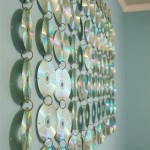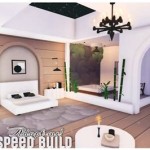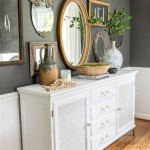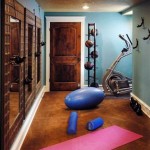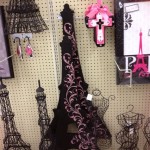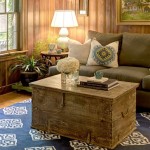DIY Room Decor: Illuminating Your Space with Neon Signs
Neon signs, once primarily associated with commercial advertising and bustling cityscapes, have transitioned into a popular and accessible element of interior design. Their vibrant glow and customizable nature allow for the creation of personalized and visually striking room decor. While professionally manufactured neon signs can be costly, the DIY approach offers a more budget-friendly and creatively fulfilling alternative. This article explores the process of crafting DIY neon signs for room decoration, covering various techniques, materials, and design considerations.
The appeal of neon signs in interior decorating stems from their ability to add a unique and eye-catching focal point to any room. They can be used to express personal style, showcase favorite quotes, or simply provide ambient lighting. The DIY route empowers individuals to tailor the design, size, color, and overall aesthetic of their neon sign to perfectly complement their existing decor.
Understanding the Basics of DIY Neon Sign Creation
Before embarking on a DIY neon sign project, it is essential to understand the fundamental principles involved. Traditional neon signs utilize glass tubes filled with neon or other inert gases, which are then electrified to produce light. Replicating this process at home requires specialized equipment and expertise, making it unsuitable for most DIY enthusiasts. However, alternative methods employing readily available materials can achieve a similar aesthetic effect.
Modern DIY neon signs commonly utilize LED strip lights or electroluminescent (EL) wire to simulate the glow of neon. These materials are safer, easier to work with, and more energy-efficient than traditional neon technology. LED strip lights, typically available in a variety of colors and brightness levels, offer a versatile option for creating custom designs. EL wire, on the other hand, provides a continuous and flexible light source that can be easily bent and shaped.
The process generally involves creating a template or outline of the desired design, attaching the LED strip lights or EL wire to the template, and securing the assembly to a backing board or mounting surface. Proper planning, careful execution, and attention to detail are crucial for achieving a professional-looking result.
Materials and Tools Required
The specific materials and tools needed for a DIY neon sign project will vary depending on the chosen technique and design. However, some common items include:
- LED Strip Lights or EL Wire: Select the desired color, brightness, and length based on the project's requirements.
- Acrylic Sheet or Backing Board: Provides a sturdy base for mounting the neon sign. Acrylic is lightweight and transparent, allowing light to shine through, while wood or foam board offer a more opaque and rustic aesthetic.
- Template: A printed or drawn outline of the desired design. This serves as a guide for shaping and attaching the light source.
- Adhesive: Glue, double-sided tape, or specialized LED strip light clips for securing the light source to the backing board.
- Wire and Connectors: For wiring the LED strip lights or EL wire to a power source.
- Power Supply: A transformer or adapter that provides the correct voltage for the light source.
- Cutting Tools: Scissors, a utility knife, or a laser cutter (for more intricate designs) for shaping the materials.
- Drilling Tools: A drill or rotary tool for creating mounting holes or channels for wiring.
- Safety Gear: Safety glasses and gloves to protect against potential hazards during the construction process.
Choosing high-quality materials is essential for ensuring the longevity and durability of the DIY neon sign. Opting for reputable brands of LED strip lights or EL wire can prevent premature failure and maintain consistent brightness over time. Similarly, selecting a sturdy and weather-resistant backing board will help protect the sign from damage and ensure its stability.
Step-by-Step Guide to Creating a DIY LED Neon Sign
The following is a general guide to creating a DIY LED neon sign. Specific steps may vary depending on the chosen design and materials:
- Design and Template Creation: Begin by sketching or printing out the desired design. The template should be the same size and shape as the finished neon sign. Complex designs can be created using graphic design software.
- Backing Board Preparation: Cut the acrylic sheet or backing board to the desired size and shape. If using acrylic, consider frosting or painting it to diffuse the light and create a more even glow.
- Template Transfer: Transfer the template onto the backing board. This can be done by tracing the outline with a marker or by using carbon paper.
- Light Source Attachment: Carefully attach the LED strip lights or EL wire to the backing board, following the template outline. Use adhesive, double-sided tape, or LED strip light clips to secure the light source in place. Take care to avoid sharp bends or kinks that could damage the light source.
- Wiring and Connections: Connect the LED strip lights or EL wire to the power supply using appropriate wiring and connectors. Ensure that the wiring is properly insulated and protected to prevent electrical hazards.
- Testing and Adjustment: Test the neon sign to ensure that all lights are working correctly. Make any necessary adjustments to the positioning or wiring of the light source.
- Mounting: Mount the finished neon sign to the wall or desired surface using appropriate hardware. Consider concealing the wiring behind the sign for a cleaner aesthetic look.
Safety precautions should be followed diligently throughout the construction process. Always disconnect the power supply before making any adjustments or repairs to the wiring. Wear safety glasses and gloves when using cutting tools or working with adhesives. If unsure about any aspect of the project, consult with a qualified electrician or DIY expert.
Exploring Different Design Options and Techniques
The possibilities for DIY neon sign designs are virtually limitless. From simple geometric shapes to intricate lettering and custom logos, the only constraint is the imagination. Experimenting with different colors, fonts, and materials can lead to unique and personalized creations.
One popular technique involves using multiple colors of LED strip lights or EL wire to create gradients or contrasting effects. This can be achieved by layering different colors of light or by using color-changing LED strip lights that can be programmed to cycle through a variety of hues.
Another technique involves using stencils or masks to create more precise and intricate designs. This can be particularly useful for lettering or creating patterns with sharp edges. Stencils can be cut from paper, cardboard, or plastic using a craft knife or laser cutter.
For a more three-dimensional effect, consider using thicker materials for the backing board and carving channels or recesses to accommodate the LED strip lights or EL wire. This can create a more sculptural and visually appealing neon sign.
Addressing Common Challenges and Troubleshooting Tips
DIY neon sign projects can occasionally encounter unforeseen challenges. Addressing these issues promptly and effectively is crucial for ensuring a successful outcome. Some common problems include:
- Uneven Lighting: This can be caused by inconsistent brightness levels in the LED strip lights or EL wire, or by uneven distribution of the light across the backing board. Try adjusting the positioning of the light source or adding a diffuser to soften the light.
- Wiring Issues: Loose connections or faulty wiring can prevent the neon sign from working properly. Double-check all connections and ensure that the wiring is properly insulated.
- Adhesive Failure: The adhesive used to secure the light source to the backing board may fail over time, causing the light source to detach. Use a stronger adhesive or consider using mechanical fasteners, such as clips or staples.
- Power Supply Problems: A faulty power supply can prevent the neon sign from illuminating or cause it to flicker. Test the power supply with a multimeter to ensure that it is providing the correct voltage.
When troubleshooting problems, it is essential to proceed systematically and methodically. Start by checking the simplest components, such as the power supply and wiring, before moving on to more complex issues. Refer to online resources, DIY forums, or consult with a qualified electrician for assistance.
Safety Considerations for DIY Neon Sign Projects
Safety should be the primary concern when undertaking any DIY electrical project. Working with electricity can be dangerous, and it is essential to take appropriate precautions to prevent accidents. Some key safety considerations include:
- Disconnect the Power Supply: Always disconnect the power supply before making any adjustments or repairs to the wiring or light source.
- Use Insulated Tools: Use insulated tools when working with electrical components to prevent electric shock.
- Avoid Water: Keep water away from electrical components to prevent short circuits and electric shock.
- Wear Safety Glasses and Gloves: Wear safety glasses to protect your eyes from flying debris and gloves to protect your hands from cuts and scrapes.
- Follow Manufacturer's Instructions: Read and follow the manufacturer's instructions for all materials and tools used in the project.
- Seek Professional Assistance: If unsure about any aspect of the project, consult with a qualified electrician or DIY expert.
By adhering to these safety guidelines, individuals can minimize the risk of accidents and ensure a safe and enjoyable DIY neon sign creation experience.
Creating DIY neon signs is a rewarding and creative endeavor that allows individuals to personalize their living spaces with unique and eye-catching decorations. By understanding the basic principles, selecting the right materials, and following proper safety precautions, anyone can transform ordinary rooms into vibrant and illuminated havens.

27 Best Neon Sign Decor Ideas To Transform Any Room In 2025

Get Your Glow On With These 11 Diy Neon Signs Light Wall Art Room Decor

Led Neon Sign In Bedroom Get A Custom Above Your Bed

Diy Faux Neon Sign Art A Kailo Chic Life

Custom Neon Signs For Home Decor Led Wall Art Light

Hot Pink Paradise Neon Sign For Bedroom Decors Above Bed Room

Diy Faux Neon Sign A Kailo Chic Life

Artificial Boxwood Accent Wall And Diy Neon Sign

How To Make A Diy Led Neon Sign

100 Best Led Sign Ideas For Home Decor
